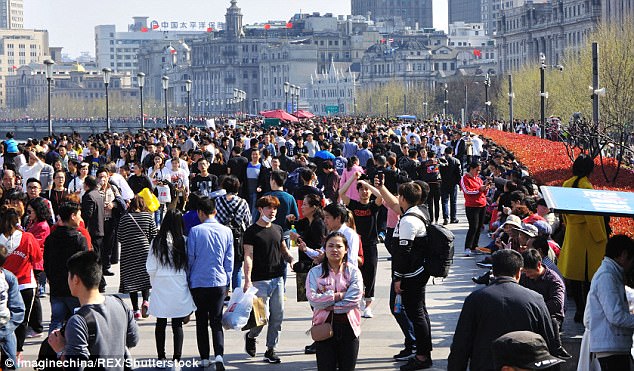>>REAL-TIME UPDATES IN THE WIRE. CLICK HERE<<<
The number of new births in several Chinese provinces hit the lowest in 60 years in 2021 and official now expect the country’s population to start to shrink ahead of 2025. Some experts say that China’s birth rate will continue to shrink for “more than a century.”
The growth rate of China’s total population has slowed significantly in recent years and is expected to turn negative during the 14th Five-Year Plan period (2021-25), said Yang Wenzhuang, the head of population department at the National Health Commission. That compared to earlier forecast that expect the decline in population to start in 2027.
The number of new births in some regions were falling to lowest levels in more than 60 years, said Yang.
Of China’s 31 province, only one province – Guangdong, the country’s largest power economic powerhouse and the wealthiest and most populous region—recorded more than 1 million new births in 2021, said Yang.
Guangdong recorded 1.18 million new births last year, making it the Chinese province with largest new births for the fourth consecutive year.
Yang’s comments reflects growing concerns among Chinese policymakers that a shrinking population threatens China’s long-term economic outlook. Officials have loosened policies on family size, such as the infamous One Child Policy, which limited households to just one child, and now allow households to have three children, in an effort to boost birth rate.
“This is an inevitable result of a long period of low fertility rate,” Huang Wenzheng, a demography expert and senior researcher at the Center for China and Globalization.
“It can be predicted that the birth rate will continue to shrink for more than a century and the birth rate in first-tier cities will continue to fall. The third-child policy may ease some of the problems, but it is unlikely to reverse the trend.”
An extended period of population decline would pose a huge challenge for China’s economy, whose past growth was powered by a large population of working-age people. UN data projects that China’s working age population will shrink from 986.5 million today to 767 million in 2050.
Chinese provincial authority have recently released demographic data fro 2021. In East China’s Anhui province, the number of new births reached about 515,800 last year, slumping by 47.6% from that in 2017, according to the local official data.
In previous years, new births in Anhui reached 984,000 in 2017, 865,000 in 2018, 766,000 in 2019, 645,000 in 2020, with annual growth rate of -12.1%, -11.4% and -15.8%, respectively.
In Central China’s Jiangxi province, new births in 2021 decreased by 50,400 from the previous year and dropped below 400,000 from the first time since 1950s.
In Central China’s Henan province, new births reached 793,000 last year, marking the lowest level since 1978 and falling below 800,000 mark for the first time since 1978 after dropping below 1 million mark in 2020. In Hunan province, new births declined below 500,000 for the first time in nearly 60 years.
In East China’s Shandong province, the number of new births in 2021 tumbled by 57.1% from that in 2017; in Henan, new birth tumbled by 43.4% from 2017-level; in Hunan, new births in 2021 dived 47,9% from 2017-level; and in Jiangxi, new births in 2021 plunged by 40.6% from the level in 2017.
Among the 10.62 million new births in China last year, 41.4% were second child and 14.5% were third child. The number of new births and the proportion of second child both declined last year from 2020 when China’s new births reached 12 million, 57.1% of which were second child.
The decline in new births is attributable to the falling number and proportion of of women in childbearing age; transforming attitudes towards marriage and raising child; and high costs in raising and educating children, said Lu Jiehua, a professor of sociology at Peking University.

